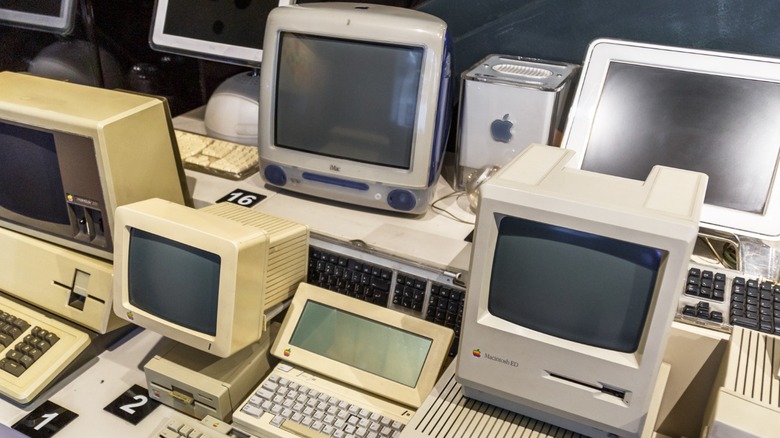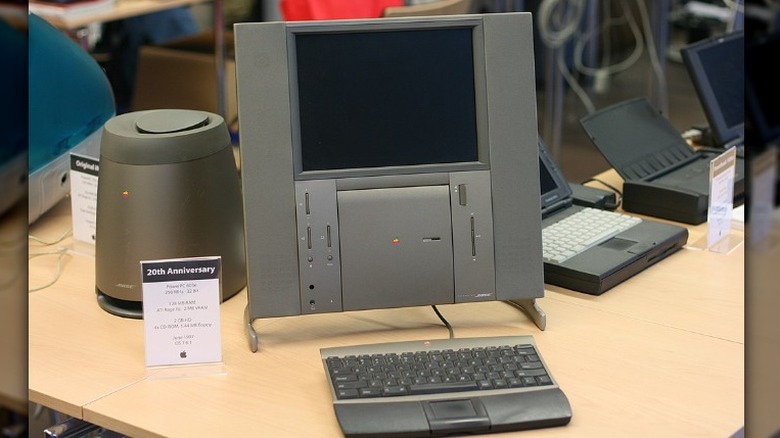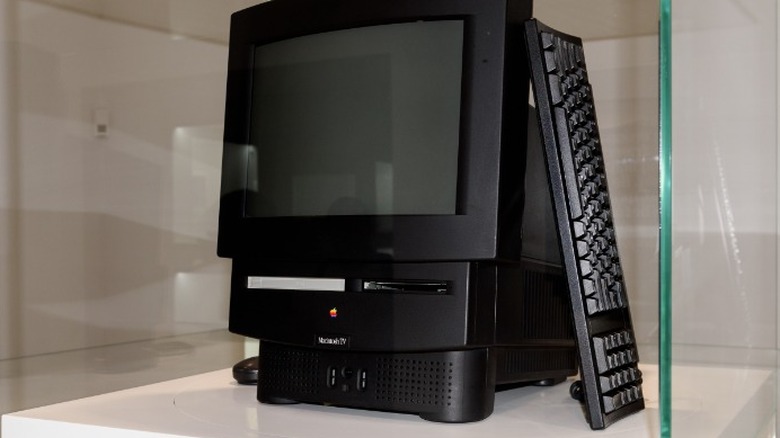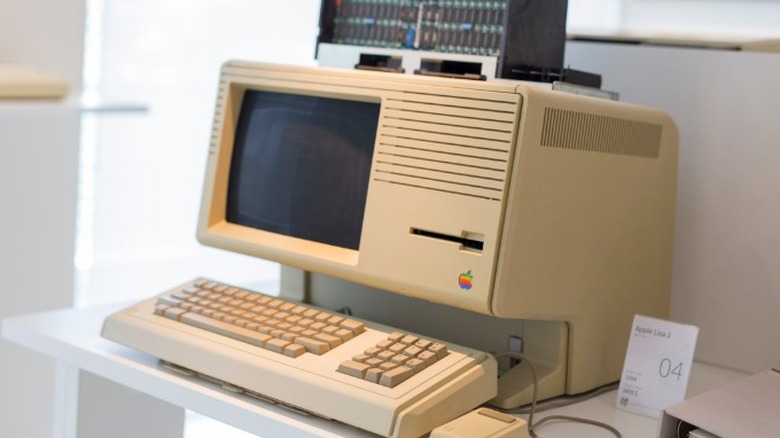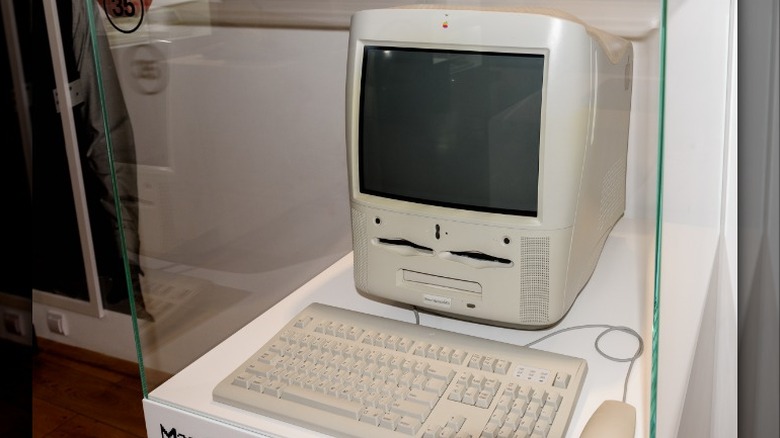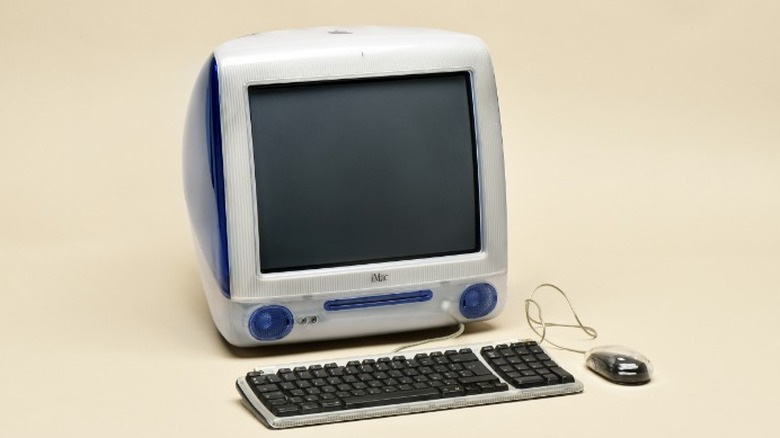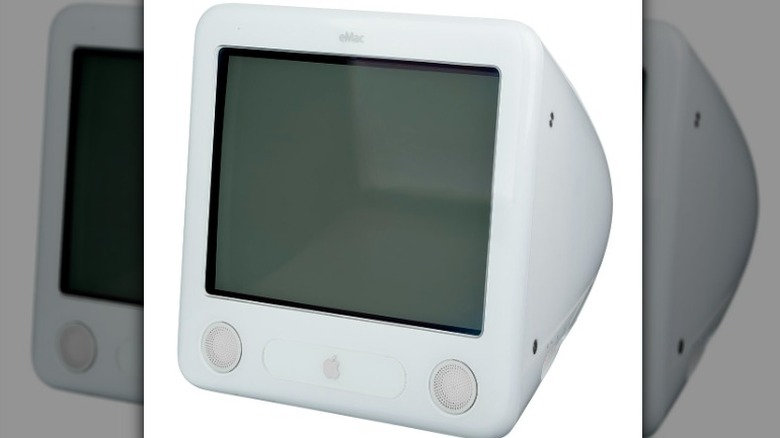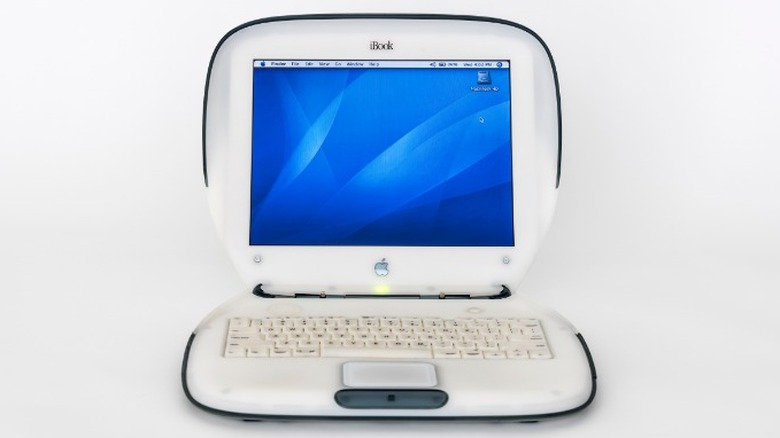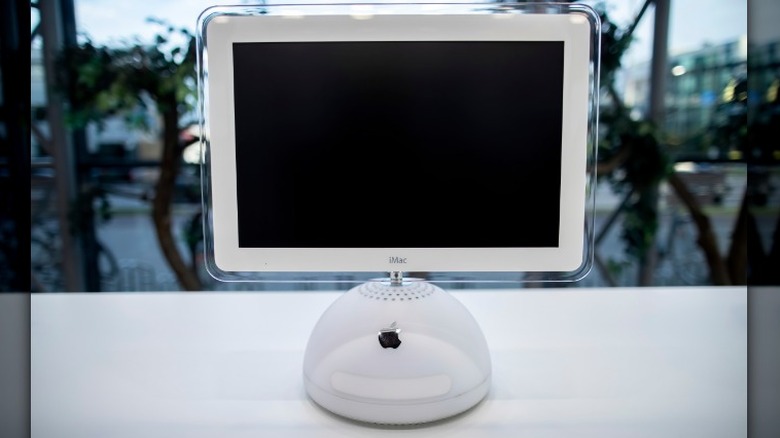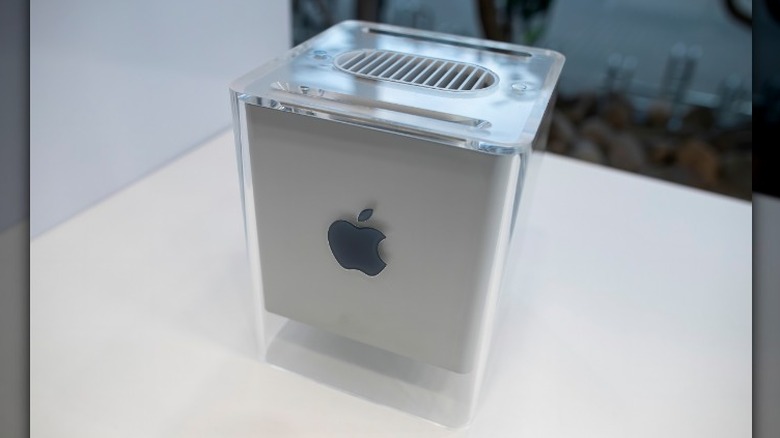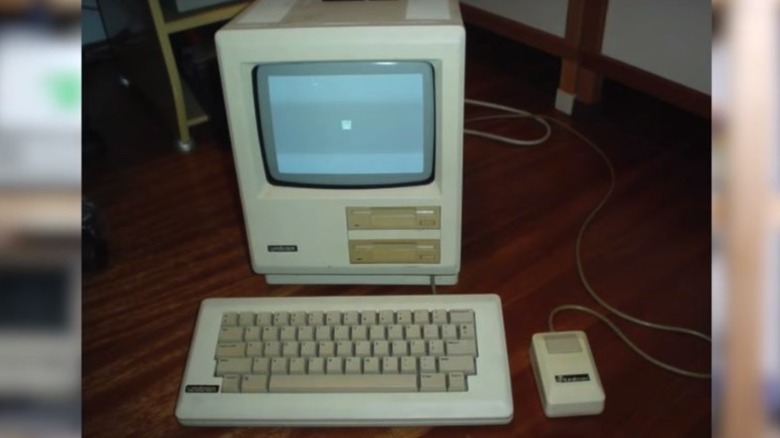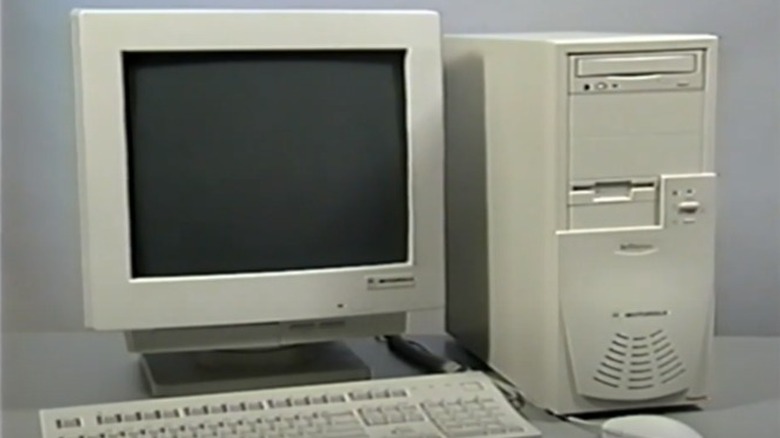The Weirdest Macs Apple Has Ever Produced
Apple is one of the most successful companies on Earth. And every successful company, despite making dozens of successful products, puts out some duds from time to time. Furthermore, to make excellent products, something needs to be learned along the way to figure out why the duds were such downright failures. It is through these failures that we learn what not to do in order to do better the next time. This is integral to growth and prosperity.
The paradox of products manufactured and sold by big successful companies that miss the mark in design, functionality, or sales is that these failures are ripe for becoming favored collector's items later on. For example, coins minted by mistake usually become the most highly valued assets of coin collectors, and often a car or rare motorcycle that did not sell well when new can become the must-have model of the next generation. Other products from the past do not end up necessarily being valuable but are often just plain weird and out of step with the products from then or now. So, despite the enormous success of Apple and the many innovative products we have seen from the company over the years, here are 10 of the weirdest Macs from the archives.
Twentieth Anniversary Macintosh
A slick graphite-colored all-in-one computer with a flatscreen and premium audio output sounds like something you would find on the shelf at Best Buy today, but it was an anomaly in 1997. Apple Computer was founded by Steve Jobs and Steve Wozniak in 1977, and the computers the pair created were thrust into the spotlight almost immediately. The Apple IIe was, for a time, the gold standard for affordable and easy-to-use home computing and it made the Steves fabulously wealthy and famous. The follow-up product, the Macintosh, saw similar success and ensured the long-term viability of the company.
When the company reached its 20th anniversary, the plan was to introduce a computer to commemorate the birth of the company, and it would have to be something special. While it was unique and well-equipped, it was not well-received and did not sell well. This machine integrated a flat screen for the first time into a desktop that was an all-in-one design, much like the original 128K Macs (via Cult of Mac). It was a slate gray color and came with premium audio accessories. It was also extremely expensive at nearly $9,000 in 1997 dollars (around $16,000 in 2022 dollars). However, for that premium, the computer would be delivered to your door in a limousine and brought in by someone in a tuxedo, kind of like a computer butler. It was weird and gimmicky but also overpriced and out of place in the market. It ultimately failed.
[Featured image by Wolfgang Stief via Wikimedia Commons | Cropped and scaled | Public domain]
Macintosh TV
Today we have the convenience and luxury of being able to watch TV on demand on a number of devices, from an actual TV to a handheld smartphone. In 1993, those worlds were still rigidly separated. Computers did computer stuff and were only just beginning to be connected to the internet, and TV came over the air, through a cable, or through a huge satellite dish, and could only be viewed when it was broadcast. Apple had always been a forward-thinking company and chose to merge the two technologies together.
The Apple Macintosh TV debuted in 1993 at a rather healthy sum of $2,099, which is more than double that in 2022 dollars. It used the Macintosh LC520 as a base and shared most of its specs, but added a TV tuner which would be shown on the built-in display, a 14-inch Sony Trinitron. The combination, according to iMore, did not work very well. The Mac could be used in TV mode or Mac OS mode, but not together, prohibiting saving any broadcast to disk. But the problems went further as the hardware was not yet advanced enough to truly handle a video stream, leaving users with less than stellar video quality. In the end, Apple only sold the Mac TV for about four months and pulled it from the market after shipping about 10,000 units.
Macintosh XL
While most of us are familiar with the original Macintosh computer that would become one of the most successful computer products of all time, it is the memorable horizontal box with the 9-inch screen that is best known. Lesser known is the other Macintosh that was released at the same time called the Macintosh XL. Many who know the history of the Mac also know that it was developed from its failed predecessor, the Lisa.
Some of the information about this machine is a bit divergent as to the what and how of its release. But, for all intents and purposes, the Macintosh XL is a Lisa with another name. It should have done better in the market as it came with a "normal" size screen of 12 inches. The Lisa was originally brought to market in 1983, but its price of $9,995 doomed it to failure immediately, per Mac Stories. Looking to find business users to adopt the new system and pricing it too high for home users — the mainstay of the company to that point — meant its target market was too narrow to be competitive.
Apple tried to market the Lisa as the XL while the more affordable Macintosh began to take off. By 1985, the new Mac had already developed a following and was selling well while the XL floundered and was slated to be killed off. Apple went so far as to offer XL owners a $2,600 credit for their computer to purchase a Macintosh Plus with Hard Disk 20. The final chapter of the Lisa concluded with Apple getting Sun Remarketing to unceremoniously dispose of 2,700 Lisa computers in a Utah landfill in 1989 (via FossBytes).
Power Macintosh G3 All-in-One
When Steve Jobs returned to Apple, he led development of the iMac to usher in a new generation of Apple with a clever all-in-one computer for the internet age. However, Apple had already developed a similar machine just before his arrival, although without the bold color schemes. Furthermore, the Power Macintosh G3 All-in-One was a very different product meant for a very different audience.
According to Mac Stories, the All-in-One was a clever package that included three disc drives, including CD-ROM and either two floppies or one floppy and a ZIP drive. The display was a 15-inch integrated CRT and the motherboard and associated components could be pulled out from the rear on a slide-out tray for easy servicing or upgrades. Another unique feature was the addition of two headphone jacks, placed on either side of the case. This placement made sense as the All-in-One was sold direct to educational institutions only, and this setup allowed two students to use it with headphones without tangling. Despite being a clever setup, it was short-lived as new boss Steve Jobs would launch the company in a whole new direction within months of its introduction.
iMac G3
Steve Jobs' first product launch after rejoining his company in 1997 was the iMac, which turned out to be the most significant product from Apple since its inception, probably more impactful and successful than either the Apple IIe or the 128K Macintosh. The company was teetering in the years since Jobs left and the success of a new product was paramount to the continued existence of Apple Computer. Jobs had also made a name for himself as a visionary obsessed with design and user experience, and he was uniquely qualified to bring the company back to profitability — especially because of his emotional attachment to the company he had founded.
The computer Jobs brought to market proved to be a breakout hit and its unusual design set it apart from anything else available at the time. Furthermore, the first G3 iMac came with cutting-edge technology packed inside, according to Pocket Lint. The iMac took the bold move to omit a floppy drive, leaving only a CD-ROM, and also incorporated USB technology for connecting peripherals. Furthermore, the all-in-one form factor made the iMac unique from any other computer at the time and the bold colors made a splash so big it could not be ignored. The iMac began a complete transformation of Apple under Jobs' leadership, which enabled it to become a leader in technology and one of the most valuable companies on the planet. However, despite its amazing success, the iMac was at its core a strange machine and still looks like nothing made today.
eMac
Apple's history has included sales to educational institutions from the early years, and early adoption by students likely contributed to at least part of its success. Kids using Apple computers in grade school could easily adopt the brand as they moved into adulthood, so there is an argument to say that was a savvy move from a marketing aspect. The G3 All-in-One Macintosh, dedicated solely to educational sales, was a novel idea to get Apples into classrooms but came at a time when the company was not in the best position to push new products and fully support them. The iMac changed that in a big way.
A few years after the iMac hit shelves in the stores, Apple took another stab at the educational market with its new best-seller. Part of the iMac's success came from the vibrant colors and unique design choices. However, it is understandable that a subdued design would be more appropriate for a classroom, and that is what Apple chose for the eMac, a computer produced just for schools. The eMac came in a solid white case and an upgraded flat-panel CRT monitor and the then-new G4 processor, per Mac Rumors. Priced at $999, it was affordable for computer labs and became a common sight among schools everywhere. While the eMac was in reality a bit less weird than the original, creating and selling a computer only for educational institutions was a novel way of selling computers and just a bit different from what had been done before and has been done since.
[Featured image by Evan-Amos via Wikimedia Commons | Cropped and scaled | Public domain]
iBook
Overhauling Apple Computer in the late '90s was not just a matter of announcing a new model and calling it a day. Jobs needed to bring about change throughout the company to truly turn the ship around. One of the products announced with the iMac was a new laptop called the iBook, a perfect naming companion to the iMac. Coming up with a new product that defies convention was a bold move for the iMac, but retooling an existing product can be tricky. Fortunately, Apple did it right with the iBook.
This new Apple laptop came with impressive specs. It featured a 300MHz G3 processor, built-in 56K modem, ethernet, and CD-ROM drive, and it also came with the new AirPort to allow for wireless internet connections (via Low End Mac). Most of the hardware was pretty good, but not revolutionary. The exterior design, however, was. The iBook came in the same bright colors and translucent panels as the iMac and it was wrapped in a curvy, flowing exterior shell. Furthermore, the clamshell design was unique as was the pop-up handle on the spine that allowed it to be carried like a small briefcase.
The iBook proved to be as valuable to the company as the iBook and paved the way for the high-powered Macbooks we have today. It was affordable, innovative, and daring, and, compared to other products at the time, was kind of weird. Everybody else was making rectangular and conservatively styled machines that may have served a purpose but failed to elicit emotion. The odd little iBook did both.
iMac G4
When the iMac debuted, it utilized the latest available technology to offer a product that performed well and would also arouse consumers into buying them. When it came time to revise the iMac, the CRT monitor was on its way out and flat-panel monitors were becoming the standard for desktop computers. This allowed Apple to recreate the iMac into a new form, and that is exactly what Apple did with the iMac G4.
The second generation iMac is probably more radical than the first, visually speaking. The next model once again set aside all convention in computer design and delivered one of the oddest shapes in the industry, and that remains true today. All of the hardware was contained in a hemispherical base from which a stalk that helped the monitor protruded right out the center. It looked more like a piece of furniture or table decor than a computer, but it went a long way to presenting a computer that could help maintain a minimalist look to the workspace.
The technical specs, according to Macworld, of this new iMac were comparable to other machines being made at the time, but the mount for the monitor was truly remarkable. With the base being perfectly counterbalanced, the stalk could move the monitor in nearly any direction and was so well-engineered that it would hold its position while remaining easy to manipulate with minimal pressure. They also proved to be durable and able to hold the monitor even years after the computer became obsolete.
Power Mac G4 Cube
With the introduction of the iMac and iBook, Jobs also set his team to recreate the desktop offerings from the company. One of these that saw less success was the Power Mac G4 Cube. This was an interesting machine that also seemed to have trouble finding a place in the market as its innovative design was not backed up with innovative hardware. Furthermore, some of the design choices actually got in the way of the user experience, which further damaged its reputation.
The Cube was supposed to be the "coolest computer ever," according to Steve Jobs (via Wired). And upon first glance, it was very cool. The whole system was housed in a clear acrylic case in a cube shape. It had no external ports or drive bays and looked a bit more like a toaster than a computer. The CD-ROM drive was a slot on top and the ports and plugs were not even in the back. Everything was plugged into the bottom with cables running back and out of the way. Its party trick was that the entire motherboard with all the hardware could be pulled straight out of the acrylic cube for easy repair and upgrades.
Despite all these cool features, it was problematic. It had no cooling fan and temperature control did not work as well as Jobs had wanted, resulting in overheated processors. It was also pricey and not as well equipped as comparable Power Macs that could be had in a traditional tower, although ensconced in translucent plastics. Apple only sold 150,000 units and was never seen again.
Unitron MAC 512
This entry is a bit of a cheat as it was not actually manufactured by Apple, and its story is the weirdest part about it. It is a foreign market product that exists due to the mismanagement of the Brazilian economy by the military dictatorship of the 1980s. Imports of many products during this era were either prohibited or had tariffs set so high as to make them functionally prohibited. Among the restrictions was microcomputers, and this was at the time that the Macintosh was soaring in popularity. The reason governments restrict imports is to spur domestic manufacturing, and that is what one Brazilian company did.
In 1985, Brazilian company Unitron received a $10 million loan for the production of a personal computer (via Low End Mac). Unitron then proceeded to reverse-engineer a 512K Macintosh and began making prototypes. The resulting product looked and felt very much like an Apple product but with a few key differences. It did have the 9-inch screen and used a mouse paired with a keyboard lacking function keys, directional keys, and extended numerical 10-key, just like the original Macintosh.
Apple obtained a prototype and lodged complaints with the Brazilian government after figuring out that its Macintosh ROM had been copied and used. Facing pressure from the American State Department, the Unitron Mac was eventually canceled, although 500 machines had already been made.
Motorola Starmax
Another Macintosh product not manufactured by Apple is the Motorola Starmax computer from the late '90s. For many years, Motorola had been making processors for Apple, and around 1996, the company licensed Apple's operating system to use on full computers made by Motorola. Unlike the Brazilian company, Motorola did this with Apple's complete blessing, but only for a few years.
These computers used hardware comparable to other computers at the time and, of course, also used Motorola PowerPC processors. They all used the latest version of Mac OS but were often better equipped and for less money. The Motorola Starmax 3000, according to CNET, originally came with 16MB RAM, 1.2GB hard drive, and a 603e processor. At this time, Apple offered its Macintosh Performa 6400/200 beginning at $2,100 (via Every Mac). At the same time, the Starmax was offered starting at $1,595, which represented a considerable bargain.
When these computers came out, Apple was in a very difficult position and losing market share. According to YouTuber Mac84, Apple Computer had trouble gaining in the new connected world of the internet and was trying whatever it could to stave off bankruptcy. The idea behind the Macintosh clones was that the licensing fees would bring in increased revenue for almost no investment. However, it was a disaster for the company as the clones only produced lower-priced competition that ate into its already tiny market share and further hurt sales for the company. After realizing its mistake, Apple ended the licensing of its OS and has never repeated that mistake.
